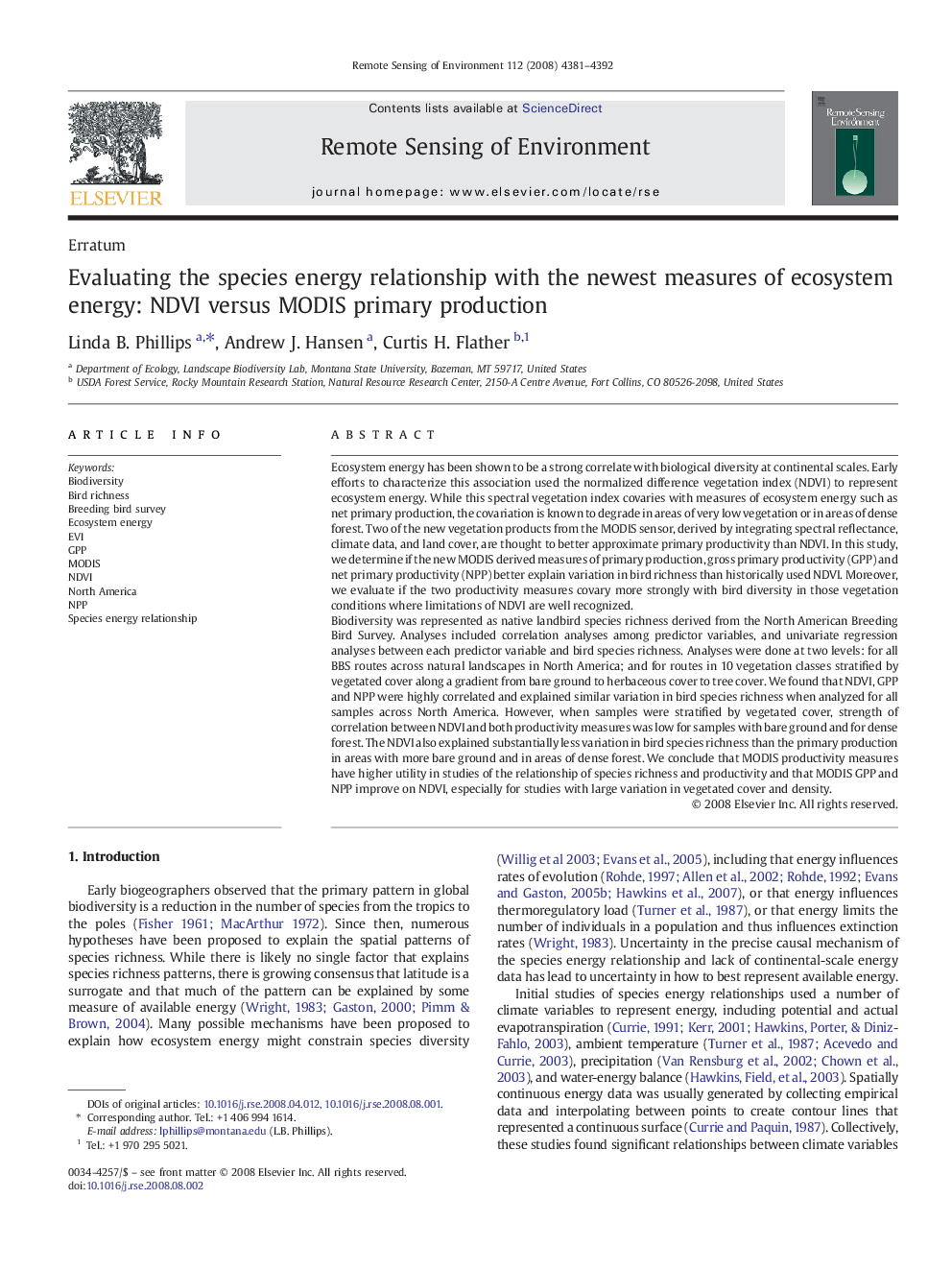| Article ID | Journal | Published Year | Pages | File Type |
|---|---|---|---|---|
| 4459870 | Remote Sensing of Environment | 2008 | 12 Pages |
Abstract
Biodiversity was represented as native landbird species richness derived from the North American Breeding Bird Survey. Analyses included correlation analyses among predictor variables, and univariate regression analyses between each predictor variable and bird species richness. Analyses were done at two levels: for all BBS routes across natural landscapes in North America; and for routes in 10 vegetation classes stratified by vegetated cover along a gradient from bare ground to herbaceous cover to tree cover. We found that NDVI, GPP and NPP were highly correlated and explained similar variation in bird species richness when analyzed for all samples across North America. However, when samples were stratified by vegetated cover, strength of correlation between NDVI and both productivity measures was low for samples with bare ground and for dense forest. The NDVI also explained substantially less variation in bird species richness than the primary production in areas with more bare ground and in areas of dense forest. We conclude that MODIS productivity measures have higher utility in studies of the relationship of species richness and productivity and that MODIS GPP and NPP improve on NDVI, especially for studies with large variation in vegetated cover and density.
Related Topics
Physical Sciences and Engineering
Earth and Planetary Sciences
Computers in Earth Sciences
Authors
Linda B. Phillips, Andrew J. Hansen, Curtis H. Flather,
